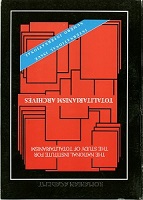The Totalitarian Architecture
The Totalitarian Architecture
Author(s): Sorin VasilescuSubject(s): Cultural history, Architecture, Political history, Recent History (1900 till today), History of Communism, Fascism, Nazism and WW II
Published by: Institutul National pentru Studiul Totalitarismului
Keywords: political history; totalitarianism; architecture; 20th century;
Summary/Abstract: The concept of totalitarianism belongs to Mussolini who, in 1925 has begun to speak about the “totalitarian will” of the revolutionary Fascism. The philosopher Gentile has taken over the term, giving it a new significance, related to “The State” that, unlike the one of the bourgeois democracies, is not subject to “become estranged” from society. The dual significance of the Mussolini’s revolutionary totalitarianism and Gentile’s philosophic “state” concept has been taken over and adapted by Germans. Ernst Jünger, as well as Mussolini, has given this concept a dynamic significance, speaking of the “total war and total call to arms”, while the most well known German law theorist, Carl Schmidt, has developed this concept in a gentilian spiritualism by defining the fundamental political relationships between “friends and foes”, in which he inserts, as a historical antithesis to liberal State pluralism, the notion of “total identity between state and society”. The English - Saxon world, following the German - Soviet pact Ribbentrop-Molotov, has included bolshevism in the concept of totalitarianism.
Journal: Arhivele Totalitarismului
- Issue Year: V/1997
- Issue No: 13-14
- Page Range: 349-379
- Page Count: 31
- Language: English
- Content File-PDF

